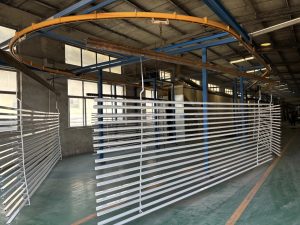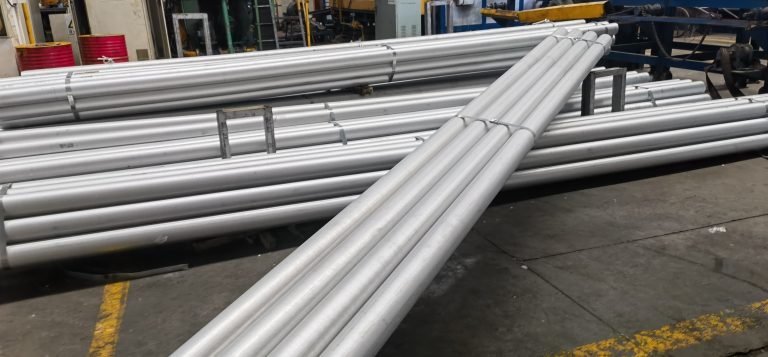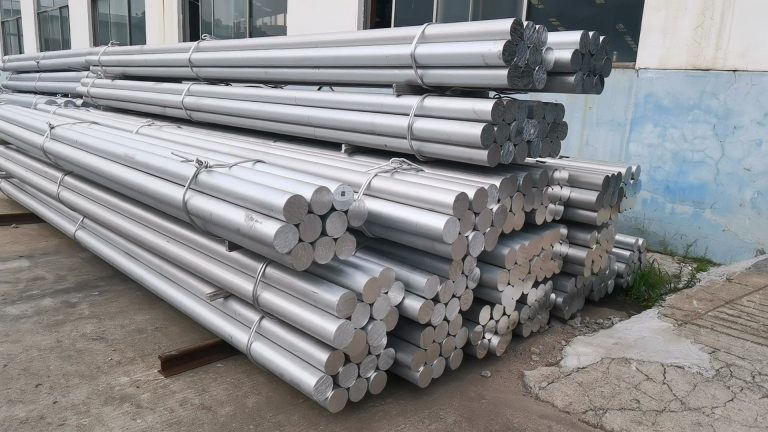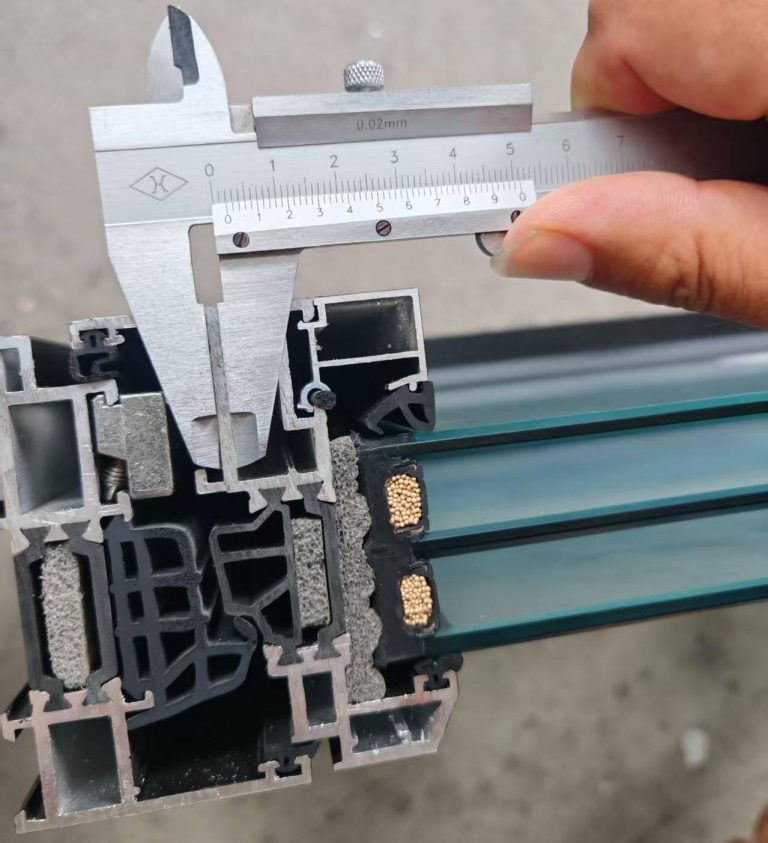Beautiful Plants For Your Interior

The surface treatment of aluminum alloy involves creating a layer with certain or multiple special properties on the surface of the material through physical or chemical methods. Through this surface treatment, the performance of the product in terms of appearance, texture, functionality, and other aspects can be enhanced.
Anodic Oxidation
The main process is anodic oxidation of aluminum, which utilizes the principles of electrochemistry to form a layer of Al2O3 (aluminum oxide) on the surface of aluminum and aluminum alloys. This oxide layer possesses special properties such as protection, decoration, insulation, and wear resistance.
- Technological Process
Monochrome, Gradient color: Polishing / Sandblasting / Brushing → Degreasing → Anodizing → Neutralization → Dyeing → Sealing → Drying
Two-Tone:
(1)Polishing / Sandblasting / Brushing → Degreasing → Masking → Anodizing 1 → Anodizing 2 → Sealing → Drying
(2)Polishing / Sandblasting / Brushing → Degreasing → Anodizing 1 → Engraving → Anodizing 2 → Sealing → Drying
- Technical Feature:
(1)Increase strength
(2)Achieve any color other than white
(3)Achieve nickel-free sealing, meeting the nickel-free requirements of countries such as Europe and the United States.
- Technical difficulties and key points for improvement:
The yield level of anodization directly affects the cost of the final product. The key to improving the anodization yield lies in the appropriate dosage of the anodizing agent, the suitable temperature and current density. This requires component manufacturers to continuously explore and seek breakthroughs during the production process.
Electrophoretic
Used for stainless steel, aluminum alloy, etc., it can make the products present various colors, maintain the metallic luster, enhance the surface performance, and have good anti-corrosion properties.
- Technological Process
Pre-treatment → Electrophoresis → Drying
- Advantage
(1)rich colors
(2)No metallic texture. Can be combined with sandblasting, polishing, and rustproofing, etc.
(3)Processing in a liquid environment enables surface treatment of complex structures.
(4)The process is mature and can be mass-produced.
- Shortcoming
The ability to conceal defects is average. For die-cast parts, electroplating requires higher pre-treatment standards.
Micro-arc Oxidation
The process of generating a ceramicized surface layer in an electrolyte solution (generally a weakly alkaline solution) by applying a high voltage is the result of the combined effect of physical discharge and electrochemical oxidation.
- Technological Process
Pre-treatment → Hot water wash → MAO → Drying
- Advantage
(1)Ceramic texture, matte finish, no glossy product, smooth touch, anti-fingerprint property.
(2)Base materials are extensive: Al, Ti, Zn, Zr, Mg, Nb, and their alloys, etc.
(3)The pre-treatment is simple, and the product has excellent corrosion resistance and weather resistance, as well as excellent heat dissipation performance.
- Shortcoming
Currently, the color options are limited. Only black, gray, and other relatively mature and bright colors are available. Brighter colors are currently difficult to achieve. The cost is mainly affected by high power consumption and is one of the highest costs in surface treatment.
PVD Vacuum Deposition
The full name is Physical Vapor Deposition. It is an industrial manufacturing process that mainly utilizes physical processes to deposit thin films.
- Technological Process:
PVD pre-cleaning → Furnace evacuation → Target washing and ion cleaning → Coating → Coating completion, cooling and unloading from the furnace → Post-processing (polishing, AFP)
- Technical Feature:
PVD (Physical Vapor Deposition, physical vapor deposition) can deposit high-hardness and high-mobility metal ceramic decorative coatings on the surface of metals.
Electroplate
This is a technology that uses the electrolysis process to form a metal film on the surface of the metal, thereby achieving the effects of preventing corrosion, improving wear resistance, conductivity, reflectivity, and enhancing aesthetics.
- Technological Process:
Pre-treatment → Cyanide-free alkaline copper → Cyanide-free white copper tin → Chrome plating
- Advantage
(1)The coating has a high gloss and presents a high-quality metallic appearance.
(2)The base materials include SUS, Al, Zn, Mg, etc.; the cost is relatively lower than that of PVD.
- Shortcoming
The environmental protection is poor and the risk of environmental pollution is high.
Powder Spraying
The process involves using a powder spraying equipment (electrostatic powder coating machine) to spray the powder coating onto the surface of the workpiece. Under the influence of static electricity, the powder will evenly adhere to the surface of the workpiece, forming a powder-like coating. This powder coating is then subjected to high-temperature baking to level and solidify, resulting in the final coating with various effects (depending on the different types of powder coatings).
- Technological Process:
Previous step → Electrostatic dust removal → Spraying → Low-temperature leveling → Drying
- Advantage
(1)Rich in colors, with options for glossy and matte finishes;
(2)The cost is low and it is suitable for building furniture products and the shells of heat sinks, etc.
(3)High utilization rate, 100% utilization, environmentally friendly;
(4)Strong ability to conceal defects;
(5)It can imitate the wood grain effect.
- Shortcoming
It is currently used less in electronic products.
Brushed Metal
It is a surface treatment method that forms lines on the surface of the workpiece through grinding, achieving a decorative effect. According to the different patterns after the wire drawing process, it can be classified as: straight line wire drawing, random line wire drawing, wave pattern wire drawing, and spiral line wire drawing.
- Technical Feature:
The wire drawing process can give the metal surface a non-glossy metallic luster, and at the same time, it can also eliminate the minor flaws on the metal surface.
Grit Blast
It is a process that uses compressed air as the power source to form a high-speed jet beam, which then sprays the coating material at high speed onto the surface of the workpiece to be processed. This causes changes in the outer surface texture or shape of the workpiece, resulting in a certain degree of cleanliness and different roughness.
- Technical Feature:
(1)Achieve different levels of gloss or matte finish.
(2)It can remove the tiny burrs on the surface of the workpiece and make the surface smoother. This eliminates the hazards caused by the burrs and enhances the quality of the workpiece.
(3)Remove the remaining dirt from the previous processing, improve the surface finish of the workpiece, which can make the metal color of the workpiece appear uniform and consistent, and make the surface of the workpiece more beautiful and attractive.
Polishing
The modification processing of the workpiece surface is carried out using flexible polishing tools and abrasive particles or other polishing media. For different polishing processes: rough polishing (the basic polishing process), medium polishing (the finishing process) and fine polishing (the polishing for achieving a glossy finish), selecting the appropriate polishing wheel can achieve the best polishing effect and simultaneously improve the polishing efficiency.
- Technological Process:
Local grinding → Overall grinding → Rough polishing → Fine polishing → Cleaning → Inspection
- Technical Feature:
Improve the dimensional accuracy or geometric shape accuracy of the workpiece, obtain a smooth surface or mirror-like luster, and at the same time, eliminate the luster.
Etching
The commonly referred to etching is also known as photochemical etching. It involves exposing a plate for making a pattern, developing it, then removing the protective film from the area to be etched. During the etching process, it comes into contact with a chemical solution to achieve the effect of dissolution and corrosion, resulting in a concave-convex or hollow-shaped formation.
- Technological Process:
Exposure method: The project starts with determining the material size based on the design – preparing the materials – cleaning the materials – drying – applying the film or coating – drying – exposing – developing – drying – etching – removing the film – Done
Screen printing method: Cutting → Cleaning the substrate (stainless steel or other metal materials) → Screen printing → Etching → Removing the film → Done
- Advantage
(1)It can perform fine processing on the surface of metals.
(2)Give the metal surface special effects;
- Shortcoming
The corrosive liquids (such as acids and bases) used during etching are mostly harmful to the environment.



